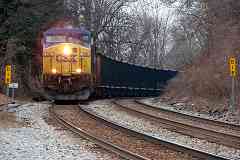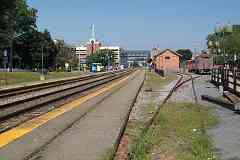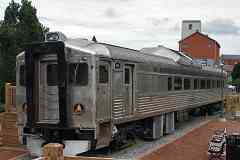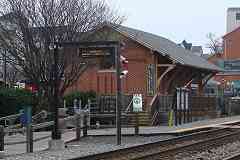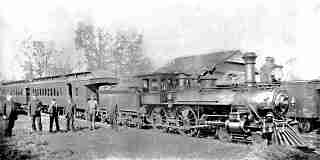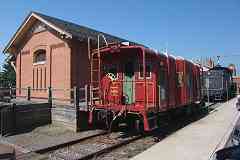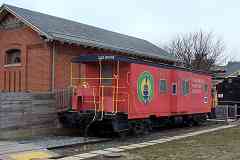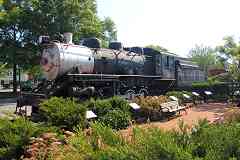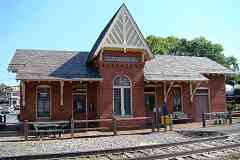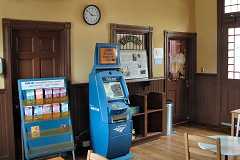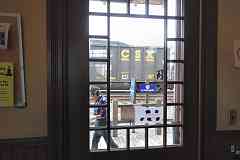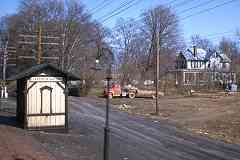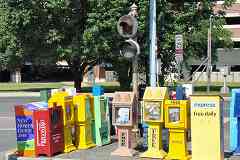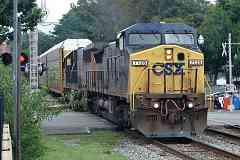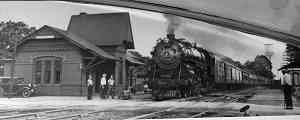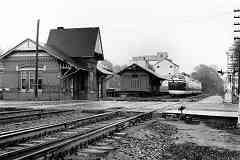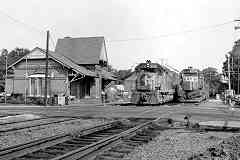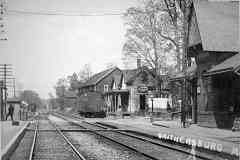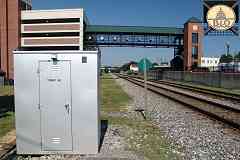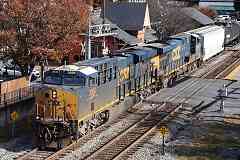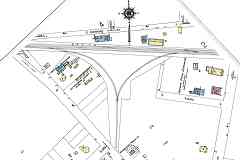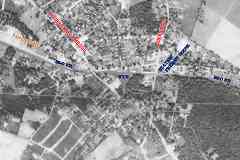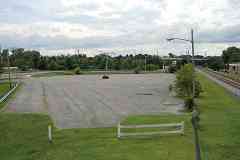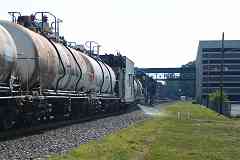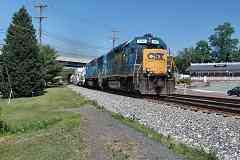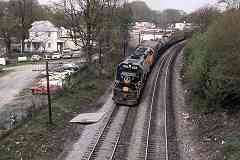|
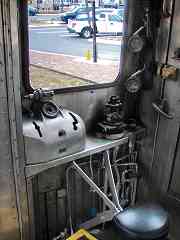 One railcar on display is this ex-B&O Budd RDC unit originally
numbered 6652 when built during 1953. The operator's control
cabin (right) was period-typical sparse: no cupholders!
One railcar on display is this ex-B&O Budd RDC unit originally
numbered 6652 when built during 1953. The operator's control
cabin (right) was period-typical sparse: no cupholders!
Rail Diesel Cars (RDCs) were manufactured by Budd from 1949 to
1962. They operated as a single car because they were self-propelled
by two diesel engines. Though this example at Gaithersburg has not
operated for decades, its interior still carries the scent of
diesel fumes, one of the downsides of the otherwise smart design.
The engines powered the wheels directly, not via electricity.
B&O sold this unit to MARC who refurbished it and ran it
on commuter lines within Maryland during the 1980s.
In an experimental design called the M-497 "Black Beetle", the New
York Central Railroad affixed two jet engines to a Budd RDC similar to
this one, and set a US rail speed record of 183 mph during 1966, a
record that as of this writing (2024) still stands.
Link:
more about the Black Beetle
| 